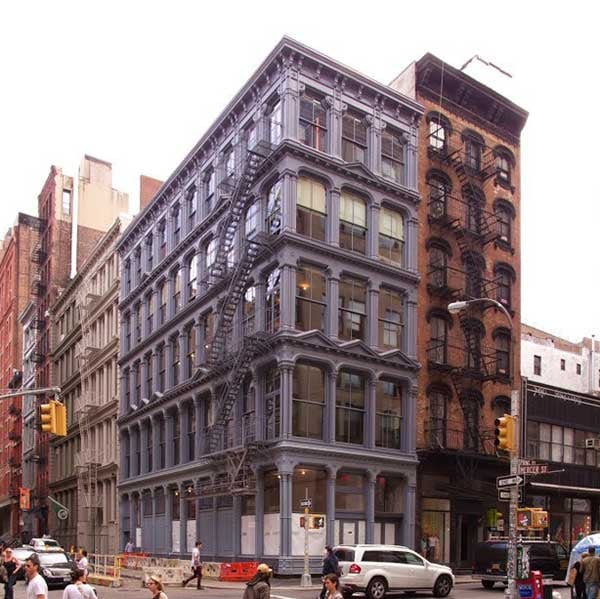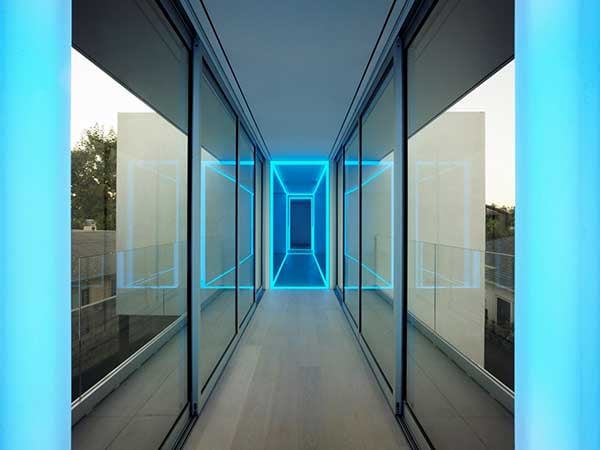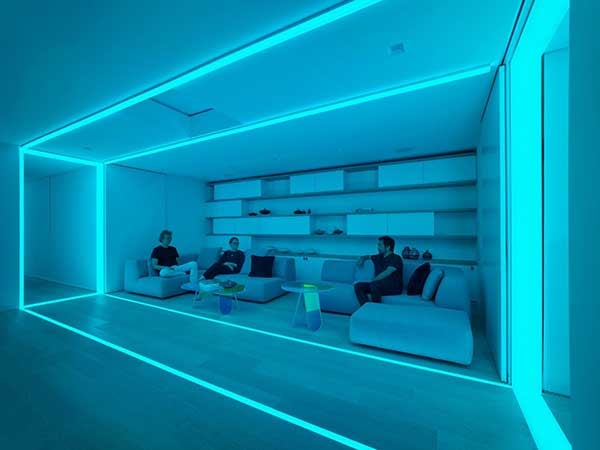
EYRC's Spectral Bridge House
Written by Bryan Kim
Among the most daring and influential “architects” in contemporary practice are artists like James Turrell, Hiroshi Sugimoto, and Ai Weiwei. Blurring the distinction between art, sculpture and architecture, these artist/architects provide valuable conceptual depth and spatial exploration that can easily be left out of the profession of architecture.
While influential in their own right, these architects (and others) owe much to the earlier work of Donald Judd. Here, we explore his history and the impact that he had on the field.

The Simple Expression of Complex Thought
Born in 1928, Donald Judd emerged as a major post-war influence of “minimalism,” a term he spent most of his life refuting. By moving from painted wall canvas to free standing work, Judd’s progression indicated a separation from the traditional bounds of painterly exhibition into one that had to deal with space.

While many saw the geometric shapes as a reduction to essentials, Judd rejected “minimalism” by instead describing his work as “the simple expression of complex thought.”1 As his awareness of space increased with the scope of his work, Judd became increasingly invested in the actual architectural space of exhibition.
The Spring Street Building

In 1968, Judd took a major step toward his vision of a permanent and proper exhibition of art after buying a cast iron building on 101 Spring Street in New York.1 The former garment factory and showroom was gutted to the plain structure while large windows allowed ample natural light. Each of the five stories attained a new designated purpose for living and working. Simple furniture was placed around works by Judd, Dan Flavin, Frank Stella and others, creating spaces for the immersive contemplation of art.1

The Spring Street building proved to be an informative investigation of art installation and set the precedent for Judd’s adaptive reuse and architectural renovation.2 Unconventional in its time, the restoration and use of 101 Spring Street is one the reasons why the industrial loft aesthetic is so accepted and prevalent today. Beyond the look of simple rooms lacking moldings, exposed vents and pipes, and an industrial material palette, Judd and his studio became an example of a truly intertwined live/work culture.

Donald Judd and EYRC
From Spring Street to Marfa, Texas, Judd took a unique path toward a holistic and meditative experience of art. In the decades since Judd’s rise to prominence, many other artists and architects (like those mentioned earlier) have worked in their own ways to further intertwine space and art. One example in EYRC’s work is the Spectral Bridge House, a collaboration between artist Johannes Girardoni and architects Steven Ehrlich and Takashi Yanai.
Intended as “a vessel for living and art,” the house is an exploration of an immersive art experience. The artist, Johannes Girardoni, creates site-specific projects that explore connections between art, design, technology, and architecture, embedding his work three-dimensionally in the narrow lot.

The main art piece, Spectral Bridge is timed to the sunset and sunrise, shifting through color sequences based on a year-long evolution of the spectrum. Family and visitors experience it from the inside as a series of spaces defined by lines of light, volumes of color, and ambient sound.

Articulated as discrete volumes, the spaces of the home can be transformed to blur the distinction between inside and outside. In composition with these surrounding forms and negative space, the bridge is a glowing physical presence that unifies art and architecture on the beach-side urban lot.

Bibliography
1. Serota, Nicolas. Donald Judd, 1928-1994. New York, NY: D.A.P./Distributed Art Publishers, 2004.
2. Flückiger, Urs Peter. Donald Judd: Architecture in Marfa, Texas. Basel: Birkhäuser, 2007.

Written by Bryan Kim
Bryan Kim, RA is an architect and project manager at EYRC Architects. He has been involved in a variety of project types at the firm, ranging from educational campuses to creative office projects. Bringing a keen design eye and excellent communication skills, Bryan quickly becomes a favorite of EYRC clients.
